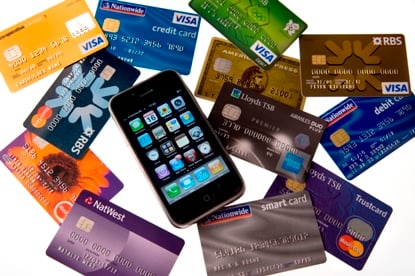Of the seven billion people on the planet, more than 1 billion individuals have smartphones or tablets. Increasingly, data shows that more consumers rely on mobile technology to help them as they make important day-to-day buying decisions -- from gathering information about products and services to paying for transactions at the point-of-sale (POS).
To capitalize on the proliferation of smartphones and tablets, retailers and other companies need to make their business processes more mobile-friendly. This helps businesses improve efficiencies, enhance customer satisfaction, reduce costs and drive more revenue. But, before businesses can incorporate mobile into their sales processes, they need to address one huge concern: security.
In the United States, POS security presents a major concern because it’s where 46% of worldwide credit card fraud takes place. One way businesses in other parts of the world are countering this issue is by transitioning to the Europay, MasterCard and Visa (EMV) global payment standards. Yet even though almost half of the world’s credit card fraud takes place in the U.S., the country lags behind the rest of the world in adopting the EMV standard.
What it means to be “EMV approved”
The EMV global payment standards were first introduced in France in the mid-90s. It is the most widely accepted payment standard outside the U.S. According to the EMV standards organization, more than 1.55 billion EMV-accepted cards are in use around the world.
While many people have heard of EMV, most aren’t exactly sure what it means to be “EMV approved.” EMV approved technology requires certain specifications for the physical and electronic components of smart chips designed for payment instruments--mainly debit cards and credit cards. EMV certified devices assure that payment instruments contain embedded microprocessors that meet certain standards for storing and securing cardholders’ data.
EMV enabled devices communicate with a microchip inside customers’ smart card. The chip contains the information required to authenticate the card when it is presented to make a payment. The customer must then enter a PIN into the terminal to validate their identity (Chip and PIN) or provide a signature (Chip and Sign).
The two-factor authentication process validates the card and the cardholder. These smart cards provide consumers and businesses a more secured payment alternative compared to the traditional magnetic stripe that contains encoded customer information which can be copied much more easily.
Benefits of adopting EMV
The primary benefits of EMV POS technology centers on providing a more secured buying experience for you and your customers in the following ways:
- Thwart fraudulent activities targeting businesses and cardholders
- Reduce chargeback for fraudulent transactions
- Eliminate annual PCI-DSS audit by implementing certain EMV certified devices
In essence, EMV reduces the chance of your business accepting bogus cards and incurring unwanted liability.
The countdown to 2015
While U.S. acquiring banks had until April 2013 to migrate to EMV, merchants and card issuers have two years left to migrate until their time runs up. During this period, EMV chip cards will also have a magnetic stripe, which ensures that businesses will have the ability to accept all payment methods during the transition and have the time needed to adopt an EMV certified system into their operations. While most of the world is already using EMV approved devices, failing to implement this technology into your operation can put you at a competitive disadvantage in local and global marketplaces.
Why mobility matters
As merchants and their customers become more technology savvy and reliant on mobile devices, businesses are looking for a point of sale solution that leverages industry best  practices, incorporates all of the latest security features, and uses technology that’s going to be around for years to come. Therefore, it’s important to implement the right solution up front, so you’re not investing a substantial amount of money in one technology, only to replace it the very next year.
practices, incorporates all of the latest security features, and uses technology that’s going to be around for years to come. Therefore, it’s important to implement the right solution up front, so you’re not investing a substantial amount of money in one technology, only to replace it the very next year.
While many businesses have yet to transition to mobile point of sale, all signs point to the fact this technology is here to stay. And although there remains some speculation over whether the entire word will ever truly adopt the global EMV standards, the countdown to the 2015 deadline continues on. As a result, many businesses have decided to use the “kill two birds with one stone” strategy, and are now implementing a POS solution that’s not only mobile-enabled, but also EMV approved.
Now the challenge lies in finding a mobile EMV solution that’s not only cost-effective, but is also quick and easy to implement so your business doesn’t get left behind. Luckily, solutions such as these are starting to emerge so that the most forward-thinking businesses have the tools they need to stay ahead of the curve.










